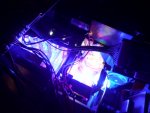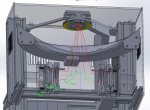I need something around 500~1000W CW near 450nm.
The most powerful I can find are the 100W Nichia nubm31t and nubm34.
I only have designs to direct 2 or 4 arrays to one location. Anymore than 4 will be very difficult to do.
What options do I have?
The most powerful I can find are the 100W Nichia nubm31t and nubm34.
I only have designs to direct 2 or 4 arrays to one location. Anymore than 4 will be very difficult to do.
What options do I have?











